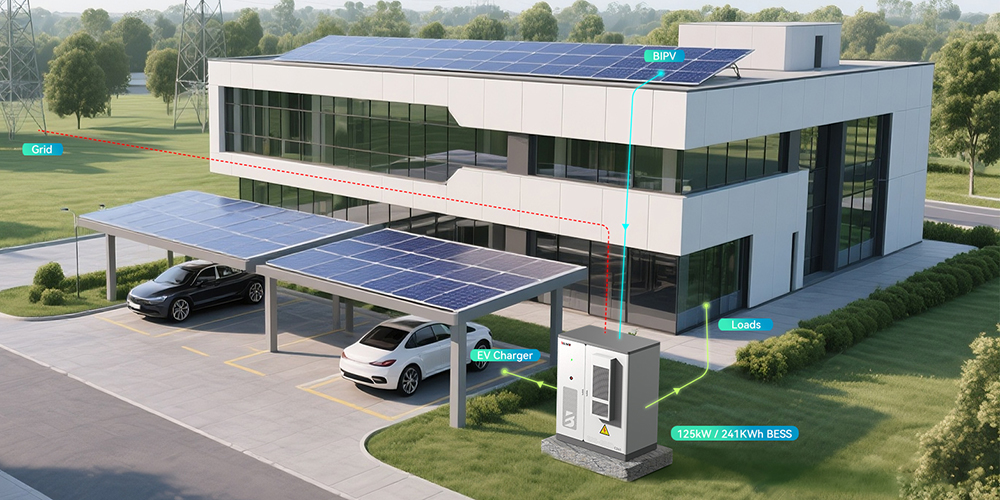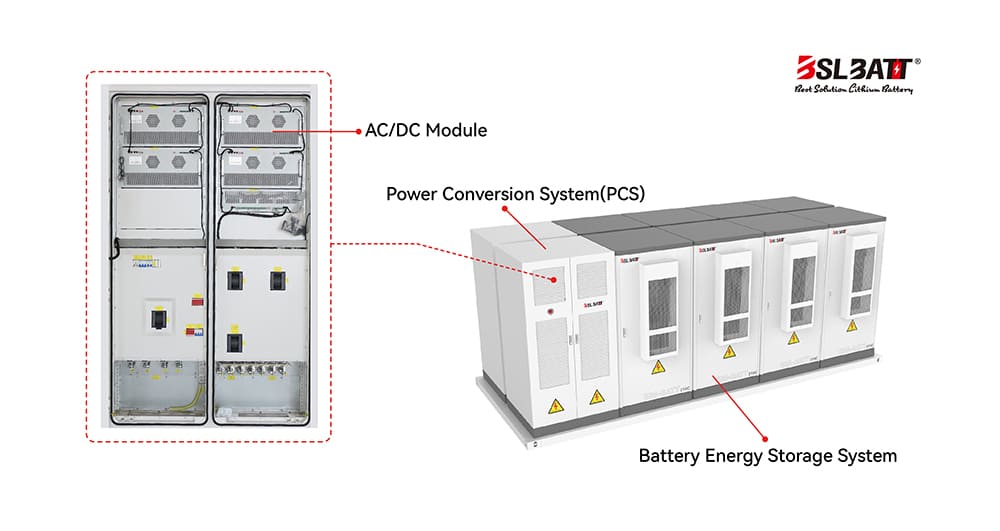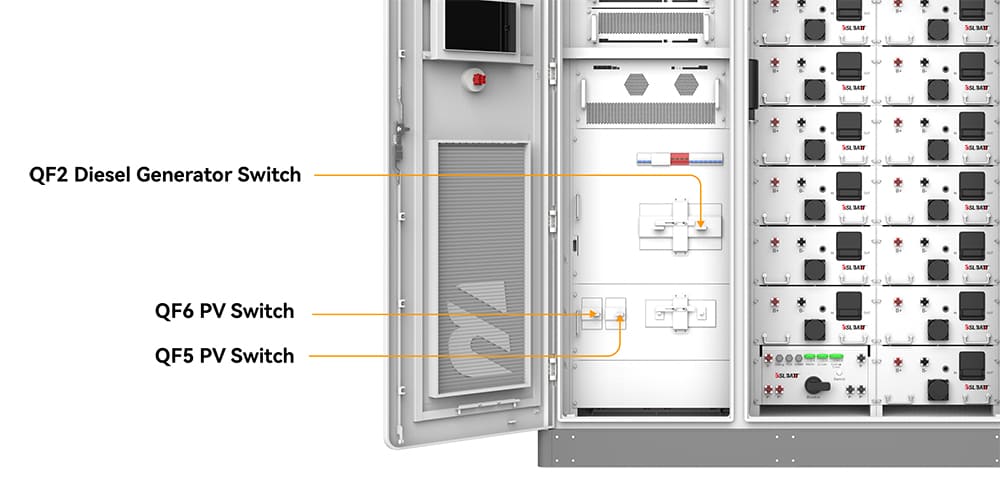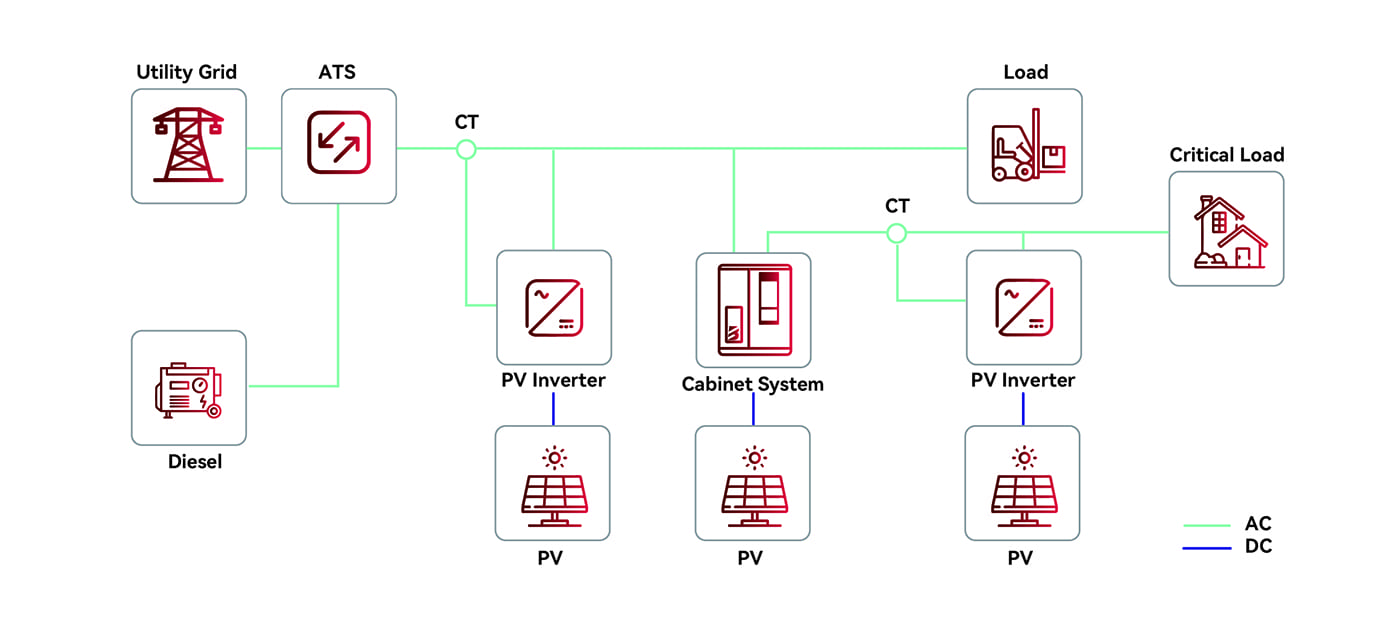
As experts in advanced battery storage technology, we at BSLBATT are often asked about the power of energy storage systems beyond the residential setting. Businesses and industrial facilities face unique energy challenges – fluctuating electricity prices, the need for reliable backup power, and the increasing demand to integrate renewable energy sources like solar. This is where Commercial and Industrial (C&I) Energy Storage Systems come into play.
We believe that understanding C&I energy storage is the first step for businesses looking to optimize their energy use, reduce costs, and enhance operational resilience. So, let's dive into what exactly a C&I energy storage system is and why it's becoming an essential asset for modern businesses.
Defining Commercial and Industrial (C&I) Energy Storage
At BSLBATT, we define a Commercial and Industrial (C&I) energy storage system as a ESS battery-based (or other technology) solution deployed specifically at commercial properties, industrial facilities, or large institutions. Unlike the smaller systems found in homes, C&I systems are designed to handle much larger power demands and energy capacities, tailored to the operational scale and specific energy profile of businesses and factories.
Differences from Residential ESS
The primary distinction is in their scale and application complexity. While residential systems focus on home backup or solar self-consumption for a single household, C&I batrtery systems address the more significant and varied energy needs of non-residential users, often involving complex tariff structures and critical loads.
What Makes Up a BSLBATT C&I Energy Storage System?
Any C&I energy storage system isn't just a big battery. It's a sophisticated assembly of components working together seamlessly. From our experience in designing and deploying these systems, the key parts include:
BATTERY PACK: This is where the electrical energy is stored. In BSLBATT's industrial and commercial energy storage products, we will choose larger lithium iron phosphate (LiFePO4) cells to design industrial and commercial energy storage batteries, such as 3.2V 280Ah or 3.2V 314Ah. Larger cells can reduce the number of series and parallel connections in the battery pack, thereby reducing the number of cells used, thereby reducing the initial investment cost of the energy storage system. In addition, 280Ah or 314 Ah cells have the advantages of higher energy density, longer cycle life, and better adaptability.

Power Conversion System (PCS): PCS, also known as a bidirectional inverter, is the key to energy conversion. It takes DC power from the battery and converts it to AC power for use by facilities or back to the grid. Conversely, it can also convert AC power from the grid or solar panels to DC power to charge the battery. In BSLBATT's commercial storage product series, we can provide customers with power options from 52 kW to 500 kW to meet different load requirements. In addition, it can also form a commercial storage system of up to 1MW through parallel connection.
The Energy Management System (EMS): The EMS is the overarching control system for the entire C&I storage solution. Based on programmed strategies (like your utility's time-of-use schedule), real-time data (like electricity price signals or demand spikes), and operational goals, the EMS decides when the battery should charge, discharge, or stand ready. BSLBATT EMS solutions are designed for intelligent dispatch, optimizing system performance for various applications and providing comprehensive monitoring and reporting.
Auxiliary Equipment: This includes components like transformers, switchgear, Refrigeration system (BSLBATT industrial and commercial energy storage cabinets are equipped with 3kW air conditioners, which can significantly reduce the heat generated by the energy storage system during operation and ensure battery consistency. In order to reduce costs, some battery manufacturers only provide 2kW air conditioning systems) safety systems (fire suppression, ventilation), and temperature control systems to ensure the system operates within optimal conditions.
How Does a C&I Energy Storage System Actually Work?
The operation of a C&I energy storage system is orchestrated by the EMS, managing the flow of energy via the PCS to and from the battery bank.
On-grid mode (reduce electricity costs):
Charging: When electricity is cheap (off-peak hours), abundant (from solar during the day), or when grid conditions are favorable, the EMS instructs the PCS to draw AC power. The PCS converts this to DC power, and the battery bank stores the energy under the watchful eye of the BMS.
Discharging: When electricity is expensive (peak hours), when demand charges are about to hit, or when the grid goes down, the EMS instructs the PCS to draw DC power from the battery bank. The PCS converts this back into AC power, which then supplies the facility's loads or potentially sends power back to the grid (depending on the setup and regulations).
Completely off-grid mode (areas with unstable power supply):
Charging: When there is sufficient sunlight during the day, the EMS will instruct the PCS to absorb DC power from the solar panels. The DC power will be stored in the battery pack first until it is full, and the rest of the DC power will be converted into AC power by the PCS for various loads.
Discharging: When there is no solar energy at night, the EMS will instruct the PCS to discharge DC power from the energy storage battery pack, and the DC power will be converted into AC power by the PCS for the load. In addition, the BSLBATT energy storage system also supports access to the diesel generator system to work together, providing stable power output in off-grid or island situations.
This intelligent, automated charging and discharging cycle allows the system to provide significant value based on pre-set priorities and real-time energy market signals.
What Can C&I Energy Storage Do for Your Business?
BSLBATT commercial and industrial battery energy storage systems are mainly used behind the user, providing a range of powerful applications that can directly meet corporate energy cost and reliability needs. Based on our experience working with many customers, the most common and effective applications include:
Demand Charge Management (Peak Shaving):
This is perhaps the most popular application for C&I storage. Utilities often charge commercial and industrial customers based not just on the total energy consumed (kWh) but also on the highest power demand (kW) recorded during a billing cycle.
Our users can set the charging and discharging time according to the local peak and valley electricity prices. This step can be achieved through the HIMI display screen on our energy storage system or the cloud platform.
The energy storage system will release the stored electricity during the peak demand (high electricity price) period according to the advance charging and discharging time setting, thereby effectively completing the "peak shaving" and significantly reducing the demand electricity charge, which usually accounts for a large part of the electricity bill.
Backup Power & Grid Resilience
Our commercial and industrial energy storage systems are equipped with UPS functionality and switching time of less than 10 ms, which is critical for businesses such as data centers, manufacturing plants, healthcare, etc.
BSLBATT commercial and industrial (C&I) energy storage systems provide reliable backup power during grid outages. This ensures continuous operations, prevents data loss, and maintains safety systems, thereby enhancing overall business resilience. Combined with solar energy, it can create a truly resilient microgrid.
Energy Arbitrage
Our commercial and industrial energy storage system PCS has grid connection certification in many countries, such as Germany, Poland, the United Kingdom, the Netherlands, etc. If your utility company adopts time-of-use electricity prices (TOU), BSLBATT commercial and industrial energy storage system (C&I ESS) allows you to buy electricity from the grid and store it when the electricity price is the lowest (off-peak hours), and then use this stored electricity when the electricity price is the highest (peak hours) or even sell it back to the grid. This strategy can save a lot of costs.
Energy Integration
Our industrial and commercial energy storage system can integrate multiple energy sources such as solar photovoltaic, diesel generators, and power grids, and optimize energy use and maximize energy value through EMS control.

Ancillary Services
In deregulated markets, some C&I systems can participate in grid services like frequency regulation, helping utilities maintain grid stability and earning revenue for the system owner.
In deregulated markets, some C&I systems can participate in grid services like frequency regulation, helping utilities maintain grid stability and earning revenue for the system owner.
Why Businesses Are Investing in C&I Storage?
Deploying a C&I energy storage system offers compelling advantages for businesses:
- Significant Cost Reduction: The most direct benefit comes from lowering electricity bills through demand charge management and energy arbitrage.
- Enhanced Reliability: Protecting operations from costly grid outages with seamless backup power.
- Sustainability & Environmental Goals: Facilitating greater use of clean, renewable energy and reducing the carbon footprint.
- Greater Energy Control: Giving businesses more autonomy and insight into their energy consumption and sources.
- Improved Energy Efficiency: Reducing wasted energy and optimizing usage patterns.
At BSLBATT, we've seen firsthand how implementing a well-designed C&I storage solution can transform a business's energy strategy from a cost center into a source of savings and resilience.
Frequently Asked Questions (FAQ)
Q1: How long do C&I energy storage systems last?
A: The lifespan is primarily determined by the battery technology and usage patterns. High-quality LiFePO4 systems, like those from BSLBATT, are typically warranted for 10 years and designed for lifespans exceeding 15 years or achieving a high number of cycles (e.g., 6000+ cycles at 80% DoD), offering a strong return on investment over time.
Q2: What is the typical capacity of a C&I energy storage system?
A: C&I systems vary greatly in size, from tens of kilowatt-hours (kWh) for small commercial buildings to several megawatt-hours (MWh) for large industrial facilities. The size is tailored to the specific load profile and application goals of the business.
Q3: How safe are C&I battery storage systems?
A: Safety is paramount. As a manufacturer of energy storage systems, BSLBATT prioritizes battery safety. First, we use lithium iron phosphate, an intrinsically safer battery chemistry; second, our batteries are integrated with advanced battery management systems that provide multiple layers of protection; in addition, we are equipped with battery cluster-level fire protection systems and temperature control systems to maximize the safety of energy storage systems.
Q4: How quickly can a C&I storage system provide backup power during an outage?
A: Well-designed systems with appropriate transfer switches and PCS can provide near-instantaneous backup power, often within milliseconds, preventing disruptions to critical loads.
Q5: How do I know if C&I energy storage is right for my business?
A: The best way is to conduct a detailed energy analysis of your facility's historical consumption, peak demand, and operational needs. Consulting with energy storage experts, like our team at BSLBATT, can help you determine the potential savings and benefits based on your specific energy profile and goals.

Commercial and Industrial (C&I) Energy Storage Systems represent a powerful solution for businesses navigating the complexities of modern energy landscapes. By intelligently storing and deploying electricity, these systems enable businesses to significantly reduce costs, ensure uninterrupted operations, and accelerate their transition towards a more sustainable future.
At BSLBATT, we are dedicated to providing reliable, high-performance LiFePO4 battery storage solutions engineered to meet the rigorous demands of C&I applications. We believe that empowering businesses with smart, efficient energy storage is key to unlocking operational savings and achieving greater energy independence.
Ready to explore how a C&I energy storage solution can benefit your business?
Visit our website at [BSLBATT C&I Energy Storage Solutions] to learn more about our tailored systems, or contact us today to speak with an expert and discuss your specific needs.
Post time: Jun-10-2025













